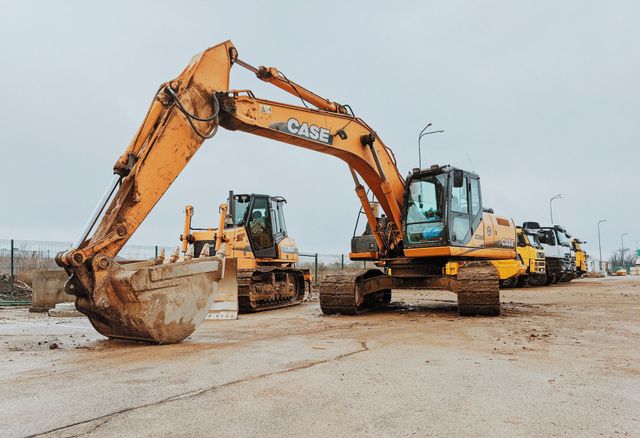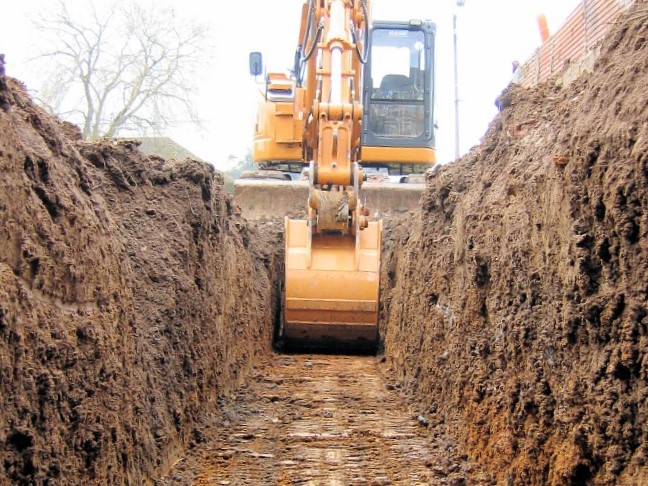Inexpensive Lancaster Excavation - High Quality Excavation at Competitive Costs
Inexpensive Lancaster Excavation - High Quality Excavation at Competitive Costs
Blog Article
Extensive Expedition: The Scientific Research Behind Superior Excavation Practices
From ancient hand tools to modern-day hydraulic excavators, the advancement of excavation strategies has actually been a testament to human ingenuity and technological advancements. What absolutely establishes premium excavation techniques apart is a deep understanding of geological concepts, combined with the use of innovative tools and approaches.
Evolution of Excavation Techniques
Throughout background, the advancement of excavation methods has played a crucial duty in progressing building methods and archaeological explorations. From the fundamental tools utilized by our ancestors to the innovative equipment used in contemporary times, the development of excavation techniques has significantly changed how we approach various tasks.
In old times, hand-operated labor with standard tools such as wheelbarrows, shovels, and pickaxes was the main approach of excavation. This labor-intensive process restricted the depth and range of excavations, frequently causing slow development and restricted access to particular sites. Nevertheless, as civilizations progressed, so did the strategies and tools made use of for excavation.
The Industrial Transformation noted a transforming point in excavation experiment the intro of steam-powered equipment. This advancement changed the field, enabling faster and extra extensive excavations. In contemporary times, innovation plays a crucial role in excavation, with developments like general practitioner systems, drones, and 3D scanning boosting precision and efficiency in the field. The development of excavation strategies proceeds to form the way we build, explore, and comprehend the globe around us.
Function of Innovation in Excavation

The assimilation of innovative innovation has basically changed the area of excavation, improving precision and efficiency to extraordinary degrees. One of the essential technological advancements that has actually substantially affected excavation practices is the utilization of general practitioner systems. These systems enable exact mapping of excavation sites, enabling drivers to accurately locate below ground utilities and frameworks. Furthermore, the use of telematics in excavation tools has made it possible for real-time tracking of device performance, bring about positive upkeep and boosted operational performance.
Furthermore, the development of 3D modeling and simulation software has streamlined the preparation procedure for excavation projects. Designers and drivers can currently imagine the whole excavation process before beginning, maximizing and identifying potential difficulties operations. Along with this, the implementation of drones in excavation activities has actually promoted aerial surveys, volumetric measurements, and site assessments with unparalleled speed and accuracy.
Geological Principles in Excavation
An understanding of geological concepts is crucial for ensuring the structural integrity and stability of excavation websites. Geological variables play an essential role in identifying the expediency and security of excavation jobs (lancaster trenching). One crucial geological concept to think about is the kind of soil or rock present at the site. Different soil kinds, such as clay, sand, or gravel, have varying levels of stability and require various excavation strategies. As an example, natural dirts like clay may require additional assistance to avoid collapses, while sandy dirts might be susceptible to erosion during excavation.
By performing comprehensive geological studies and analysis, designers and excavators can create approaches to mitigate dangers and ensure the successful conclusion of excavation projects. Ultimately, including geological principles into excavation techniques is essential for attaining secure, efficient, and sustainable outcomes.

Most Recent Devices for Excavation
In the world of excavation techniques, modern innovations in devices have actually changed the performance and accuracy of excavation procedures. Among the most recent devices making waves in the market is making use of drones furnished with sophisticated imaging innovation. These drones can offer comprehensive aerial surveys of excavation websites, supplying real-time information on topography and prospective risks. This information aids in far better preparation and decision-making during the excavation process.
An additional cutting-edge tool gaining appeal is the application of 3D printing technology for developing customized excavation equipment. This enables the production of specialized devices that are customized to the particular needs of a job, increasing performance and decreasing downtime.
Furthermore, innovations in materials science have actually led to the growth of stronger and a lot more resilient excavation devices. lancaster trenching. Tungsten carbide-tipped excavator attachments, as an example, deal exceptional efficiency in difficult ground problems, enhancing efficiency on-site
Scientific research's Effect on Excavation Practices

Additionally, scientific research on pop over to this web-site soil technicians and geotechnical engineering has actually provided useful insights into dirt actions, allowing excavation experts to make enlightened choices concerning excavation techniques and dirt stabilization methods. Overall, science proceeds to drive technology and improvement in excavation practices, making excavation jobs extra efficient, affordable, and sustainable.

Verdict
Finally, the advancement of excavation strategies has actually been substantially affected by improvements in innovation and a much deeper understanding of geological concepts. The most current devices and tools made use of in excavation have actually enhanced efficiency and precision in the area. The navigate to this site application of scientific knowledge has actually dramatically improved excavation methods, leading to extra reliable and sustainable techniques for excavating numerous sorts of products.
In the realm of excavation practices, contemporary innovations in devices have actually changed the performance and accuracy of excavation processes. By leveraging scientific principles, the excavation industry has actually been able to dramatically boost effectiveness, accuracy, and safety in excavation processes. GPR permits excavation groups to non-invasively scan and map subsurface structures, energies, and possible dangers, enabling them to plan excavation projects with better accuracy and decreased risk of crashes.
In addition, scientific research on dirt auto mechanics and geotechnical engineering has actually supplied useful insights right into soil behavior, permitting Get More Information excavation specialists to make enlightened choices concerning excavation approaches and dirt stabilization strategies. Generally, science proceeds to drive development and renovation in excavation methods, making excavation projects extra effective, cost-effective, and lasting.
Report this page